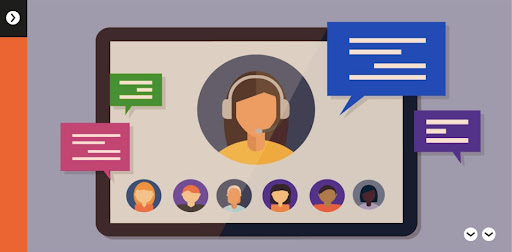Establishing Good Digital Habits
According to a 2019 Common Sense Media census, 53% of kids have their own smartphone by the time they turn 11, and those same children average just under five hours of screen time per day.
It’s important to teach children about online responsibility and how to establish healthy relationships with technology, at a young age. Since children take cues from their parents and caregivers, the biggest step in helping children use technology wisely is to model good habits and behaviors ourselves.
Technology shouldn’t interfere or detract from day-to-day life for children or adults. By having conversations early and establishing rules and parental controls when kids are young, you’ll help prevent bad habits from forming and sidestep misuse of technology as kids get older.
Here are a few best practices to establish healthy technology habits early.
- Set Tech-Free Zones and Mandatory Downtime
Teach your children that screen time is a privilege, meant to be used responsibly and only at appropriate times. Establish boundaries early on about when devices can be used and when they can’t. Create a no-technology rule for mealtimes and other activities where the focus should be on interpersonal experiences and building relationships, friendships and social skills.
Research has shown that the use of smartphones and other devices can also interfere with sleep habits and the quality of rest. Ensure your child turns off their device and puts it away at least thirty minutes before bedtime.
Setting limits on how and when technology is allowed to be used will help foster social skills and protect your child’s rest and healthy development. Boundaries offer a certain kind of freedom for children by creating a comfortable routine and clearly stating what is expected. Protecting your child’s digital wellbeing isn’t restrictive; it’s one of the greatest kindnesses you can show them.
- Find the Proper Balance
It’s critical to set age-appropriate parental controls even before your child uses a device for the first time. As children have access to technology at earlier ages, manufacturers have recognized the need to help parents monitor how kids are using devices.
Apple, for example, offers features like Screen Time, to set limits on how much time children are allowed to spend online and on which websites and apps. Other features like “Downtime,” help enforce screen-free mealtimes and bedtimes.
Find a healthy balance between letting your children enjoy technology for its educational and entertainment value, and teaching them moderation.
- Teach Good Online Behavior
You may have already had discussions about bullying with your child. It’s not just an issue that is limited to the playground or physical spaces, though. Cyberbullying has become a concern for children (and adults) of all ages. In fact, 15% of children report being the victim of at least one cyberbullying incident.
Talk to your children about positive digital interactions. Ask them if they’ve ever felt bullied online. By encouraging them to come to you with questions or doubts, they’ll be more likely to open up if they are bullied, and to inform you if they see someone else being mistreated online.
- Do Your Own Research
You know your child better than anyone. Do your own research about the best devices and content platforms for your family and know what parental controls and monitoring tools are available based on the technology guidelines you’ve set for your home.
Some devices offer very little control over content and activity, while others have a wide range of parental controls for hardware, software, and content. Consider your child’s age, maturity level, and experience with technology before choosing a device for them and giving them access to online content.
- Lead by Example
As intuitive as modern devices are (especially for children), they still require learned behaviors to operate and integrate into our lives. To ensure that technology is an aid to our children and not a hindrance, we must teach them how to use devices responsibly and as an enhancement to entertainment and productivity.
Introduce technology to your children slowly. Even before they get their first device, model good digital habits to them and explain why and how you use your devices the way you do. Children imitate what they see. Practice what you preach to your children and create tech-free zones and downtime for yourself. Make sure the content you post is positive and appropriate.
As your kids grow older, it is important to have honest and open conversations with them regarding the positive use of technology, and why certain boundaries are in place. When you take your teenager onboard in the decision-making process, you give them ownership over their lives, teaching them responsibility in a manner that appeals to their logic and critical thinking, and empowering them to make the right choices throughout their lives.












